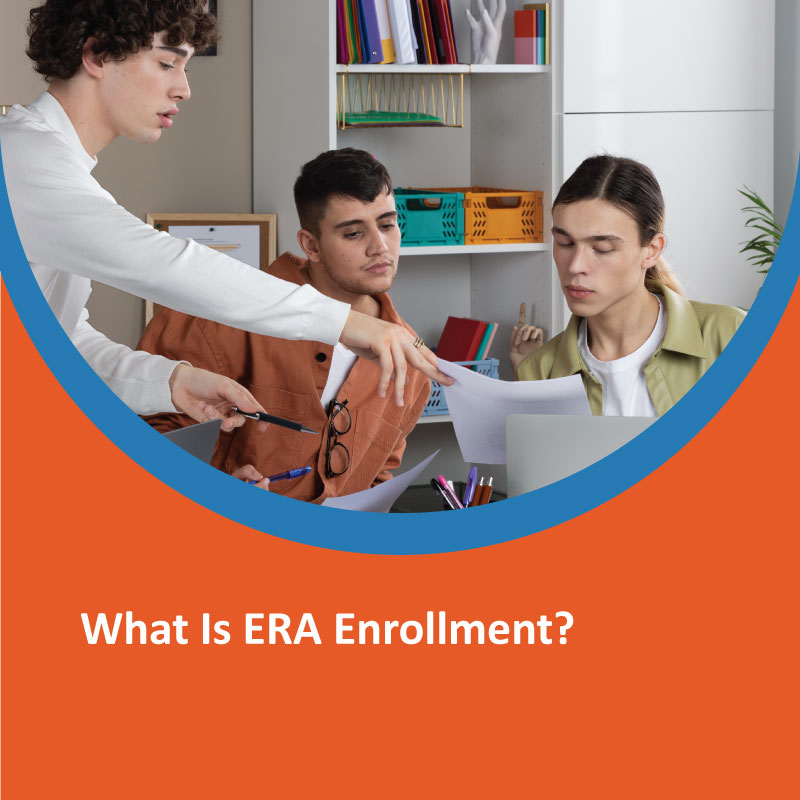Electronic Remittance Advice (ERA) enrollment allows healthcare providers to receive payment details from insurance companies electronically. ERA is a digital version of the Explanation of Benefits (EOB), providing detailed information about claims processed, payments made, and any adjustments or denials.
In simpler terms, ERA replaces the traditional paper-based remittance advice with a faster, more efficient electronic system. It helps streamline billing and payment processes for providers, making it an essential tool in modern healthcare practices.
Understanding ERA
Electronic Remittance Advice is a standard electronic document used in healthcare. It is formatted according to the HIPAA-compliant ANSI X12 835 standard. This document contains critical details about payments, including:
- The amount paid for each claim.
- Reasons for payment adjustments, such as contractual obligations or denied claims.
- Outstanding patient balances or co-pays.
By enrolling in ERA, providers receive this information directly through their billing or practice management system, eliminating the need for manual paperwork.
How Does ERA Enrollment Work?
ERA enrollment involves signing up with a payer (insurance company) or a clearinghouse to receive remittance advice electronically. Here’s how the process typically works:
Submit an Enrollment Form
The provider or billing team completes an ERA enrollment form for the specific payer. This form includes essential details like the provider’s Tax Identification Number (TIN), National Provider Identifier (NPI), and banking information.
Verify Information
The payer verifies the information provided in the enrollment form to ensure accuracy.
Set Up Electronic Delivery
Once the enrollment is approved, the payer sends electronic remittance advice to the provider’s clearinghouse or billing system.
Test the Connection
Before going live, a test run may be conducted to ensure the ERA files are delivered and processed correctly.
Benefits of ERA Enrollment
ERA enrollment offers several advantages for healthcare providers:
- Faster Payment Processing: Providers receive payment details much quicker than waiting for paper EOBs. This speeds up the revenue cycle.
- Improved Accuracy: Electronic records reduce errors caused by manual data entry. The system automatically matches ERA files to claims.
- Streamlined Workflow: ERAs integrate with billing and practice management software, making reconciling payments and addressing denied claims easier.
- Cost Savings: Eliminating paper remittance advice reduces administrative costs, including printing, mailing, and storage expenses.
- Environmental Benefits: ERA contributes to a more eco-friendly office environment by going paperless.
Who Needs ERA Enrollment?
ERA enrollment is beneficial for any healthcare provider or organization that works with insurance companies, including:
- Individual healthcare practitioners.
- Group practices.
- Hospitals and clinics.
- Billing companies and third-party administrators.
It is essential for practices that handle a high volume of claims. Receiving remittance advice electronically allows them to manage payments more efficiently and focus on patient care.
How to Get Started with ERA Enrollment
To enroll in ERA, healthcare providers should follow these steps:
- Contact Your Payer: Contact the insurance company or payer to request their ERA enrollment form. Some payers also offer online portals for enrollment.
- Complete the Form: Provide all required information, including your NPI, TIN, and banking details (if EFT is also being set up).
- Coordinate with Your Clearinghouse: If you use a clearinghouse, ensure they are set up to receive ERA files from the payer.
- Submit the Form: Send the completed form to the payer, following their submission instructions.
- Monitor the Process: Track the enrollment status and test the ERA connection once it is approved.
ERA vs. EFT
While ERA refers to receiving payment details electronically, Electronic Funds Transfer (EFT) refers to the actual money transfer from the payer to the provider’s bank account. Both processes complement each other and are often set up together. EFT ensures timely deposits, while ERA provides detailed payment information to reconcile accounts.
Conclusion
ERA enrollment is a key step in modernizing healthcare billing and payment processes. It lets providers receive detailed remittance advice electronically, improving efficiency, accuracy, and cash flow. By eliminating the need for paper-based records, ERA saves time and money and helps providers focus on delivering quality care.
Enrolling in ERA is an innovative and practical move for healthcare organizations looking to streamline their financial processes.



